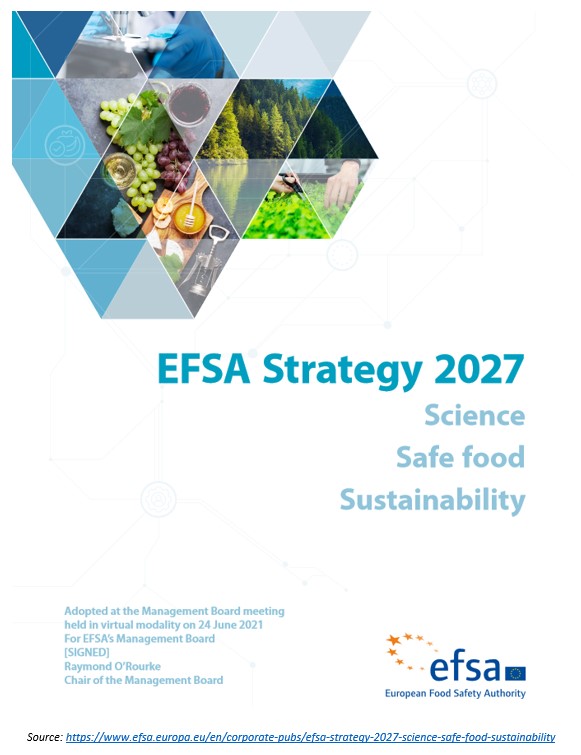EFSA’s roadmap on NAMs
What is EFSA?
The European Food Safety Authority (EFSA) is an agency of the European Union whose work is to provide scientific advice on the risks that are linked with the food and feed chain. EFSA communicates on food-related risks to ensure the safety of food and thus protect the consumers.
How is risk assessment for food performed?
At the moment, EFSA’s requirements for risk assessment are mainly based on in vivo studies (e.g., information on ADME, toxicokinetic, sub-chronic and chronic toxicity etc). Only in the field of genotoxicity and metabolism, in vitro studies can be used to submit the required data.
In parallel to the required in vivo testing, EFSA is using and has been promoting the use of alternative approaches in chemical risk assessment. These include a battery of in vitro tests for genotoxicity, the “Threshold of Toxicological Concern” (TTC) approach and the use of read across (e.g., flavourings and food contact materials).
What is the future direction of chemical risk assessment at EFSA?
In 2020, the European Commission published the ‘Chemical Strategy for Sustainability Towards a Toxic Free Environment’ which states that innovations must be made to reduce reliance on animal testing for safety and chemical risk assessment. In order to support this strategy, the Commission is funding research to move away from in vivo testing.
One of the core objectives of the EFSA strategy 2027 is to improve the quality, efficiency and speed of risk assessment while reducing the need for animal experiments. One of the key actions to achieve this goal is to further integrate the use of NAMs and -omics approaches into regulatory risk assessment.
How will EFSA integrate NAMs and -omics approaches for regulatory risk assessment?
- EFSA is developing a guidance on the use of read across for food safety assessment.
- EFSA is developing another guidance on the use of in vitro tests for the risk assessment of nanomaterials. In vitro experiments could provide valuable information on hazard, toxicokinetics, toxicodynamics, mode of action, cellular internalisation, and fate of the nanoparticles.
- An IATA was developed for the risk assessment of developmental neurotoxicity. A battery of in vitro tests has been developed and tested on a large number of case studies. It has shown very promising results.
- EFSA also recommends the use of NAMs for risk assessment of combined exposure to multiple chemicals via the use of Adverse Outcome Pathways (AOP).
As part of its roadmap, EFSA is also performing several projects on the use and development of NAMs:
- The creation of an AOP network for developmental neurotoxicity,
- The establishment of a framework for metabolic syndrome,
- The use of NAM transcriptomics for toxicology specific pathway analysis to predict target organ toxicity,
- ….
What is EFSA’s vision towards the future?
In the coming years, EFSA is hoping to slowly replace the use of in vivo experiments with NAM-based experiments (in silico, in vitro, -omics and in vivo alternatives). Beyond the use of NAMs, EFSA will also try to take a broader view on exposure assessment by integrating more exposome data (dietary and non-dietary exposure, internal exposure), epidemiological data and toxicokinetic data. This strategy will be implemented in collaboration with other European organisations such as ECHA, EMA and the ECDC.
Sources:
- EFSA’s roadmap on NAMs and related case studies, George Kass on ASCCT webinar, September 2022: https://www.ascctox.org/webinar/99
- EFSA strategy 2027: https://www.efsa.europa.eu/en/corporate-pubs/efsa-strategy-2027-science-safe-food-sustainability
- https://www.efsa.europa.eu/en/aboutefsa


